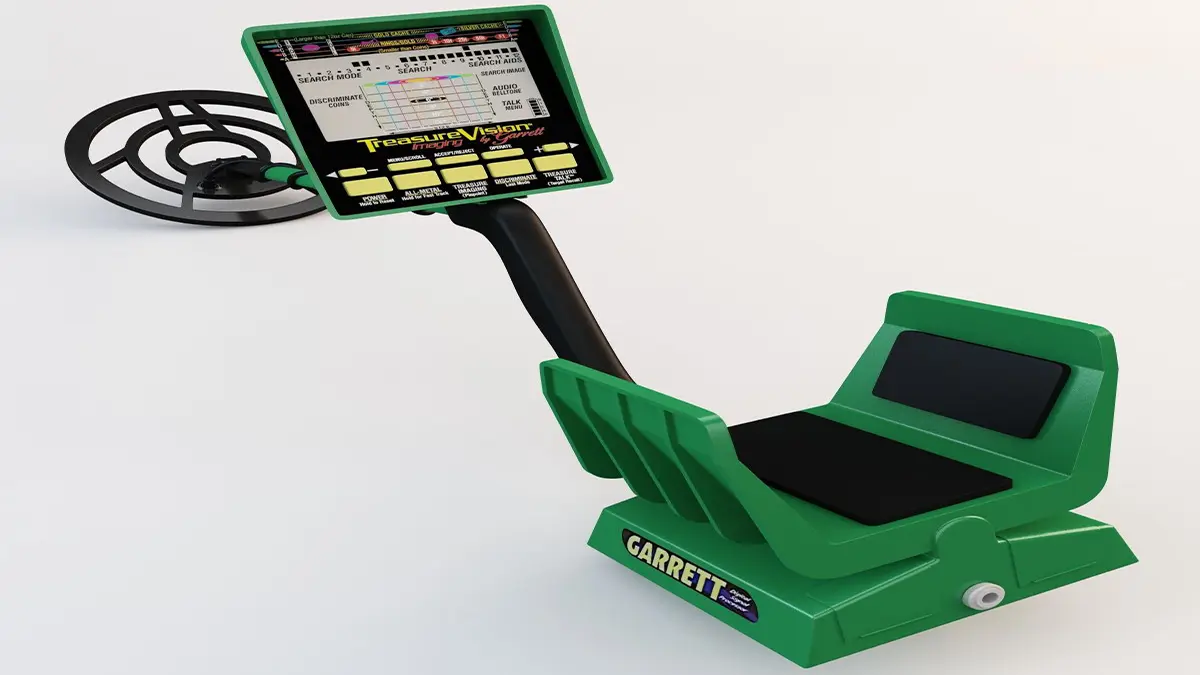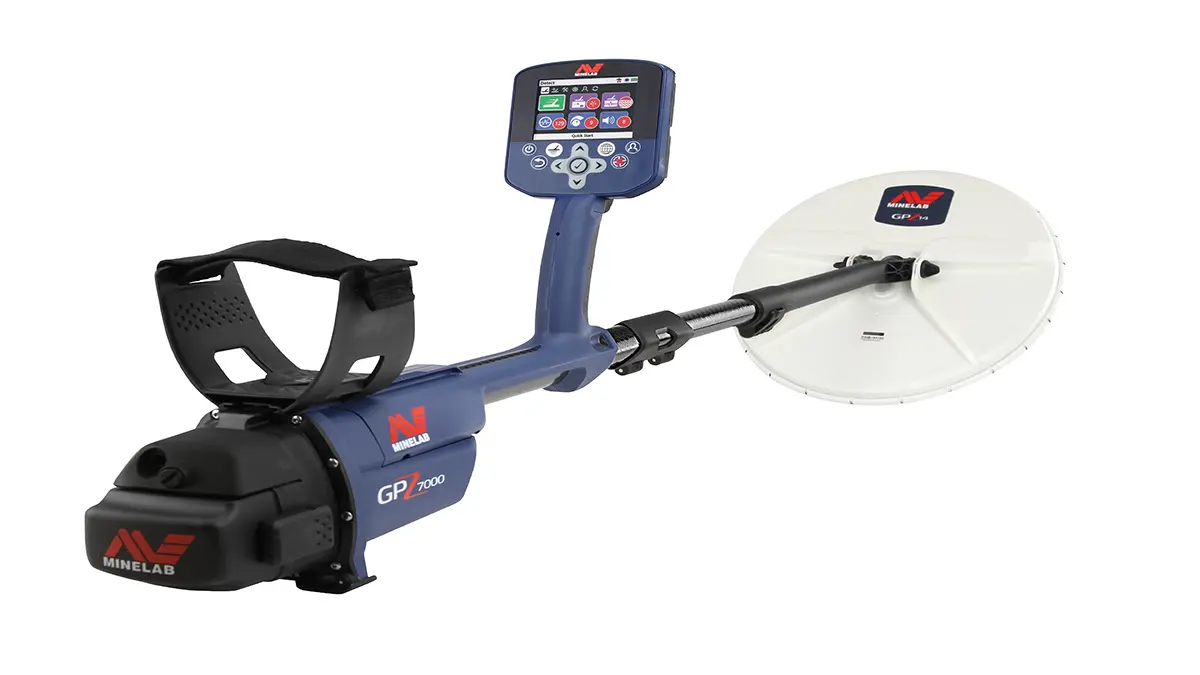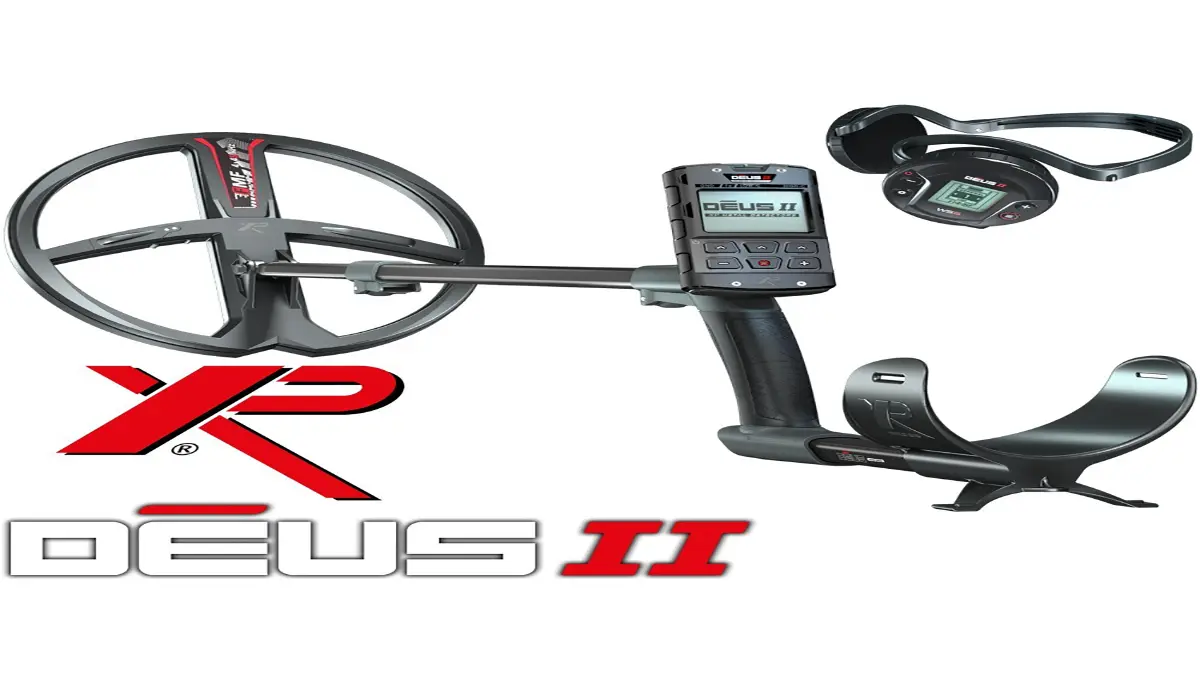Metal detectors are devices that use electromagnetic fields to detect the presence of metallic objects. They are widely used for various purposes, such as security screening, treasure hunting, archaeology, geology, and hobby. Metal detectors can vary in size, shape, design, and functionality, depending on the intended application and user preference.
Metal Detector Coils
Metal detector coils are the part of the device that generates and receives the electromagnetic signals that are used to detect the presence of metallic objects. They are one of the most important components of a metal detector, as they affect its sensitivity, depth, coverage, and performance. Metal detector coils can vary in size, shape, design, and type, depending on the intended application and user preference.
The size of the coil determines how large of an area it can scan and how deep it can penetrate. Larger coils can cover more ground and reach deeper targets, but they are also heavier, more expensive, and more prone to interference from mineralized soils. Smaller coils can be more precise and maneuverable, but they have a limited detection range and depth. The optimal size of the coil depends on the type and size of the target, the soil conditions, and the user’s comfort and budget.
The shape of the coil determines the shape and distribution of the electromagnetic field that it produces and receives. There are two main shapes of coils: concentric and double-D. Concentric coils have a circular inner coil and a larger outer coil, while double-D coils have two D-shaped coils that are overlapped. Each shape of coil has its own advantages and disadvantages, depending on the soil conditions, target size, and depth.
- Concentric coils are generally more sensitive and have a more uniform detection field, which makes them suitable for finding small and shallow targets. They also have better discrimination and pinpointing abilities, which means they can distinguish between different types of metals and locate the exact position of the target. However, concentric coils are also more susceptible to interference from mineralized soils and have a narrower detection area, which means they can miss some targets that are not directly under the coil.
- Double-D coils are generally more stable and have a wider detection area, which makes them suitable for covering large and deep areas. They also have better ground balance and performance in mineralized soils, which means they can reduce the false signals caused by the soil. However, double-D coils are also less sensitive and have a less uniform detection field, which means they can have difficulty finding small and shallow targets. They also have poorer discrimination and pinpointing abilities, which means they can confuse some types of metals and have a harder time locating the exact position of the target.
The design of the coil determines the appearance and functionality of the coil. There are different designs of coils, such as open, closed, elliptical, and spider. Open coils have a gap between the wires, which makes them lighter and easier to clean, but also more vulnerable to damage and moisture. Closed coils have a solid cover over the wires, which makes them more durable and waterproof, but also heavier and harder to clean. Elliptical coils have an oval shape, which makes them more versatile and adaptable, but also more expensive and complex. Spider coils have a web-like structure, which makes them more flexible and stable, but also more fragile and sensitive.

The type of the coil determines the frequency and mode of the electromagnetic signals that it uses and detects. There are different types of coils, such as single-frequency, multi-frequency, pulse induction, and smart. Single-frequency coils use one fixed frequency, which makes them simple and consistent, but also limited and inflexible.
Multi-frequency coils use multiple frequencies, which makes them more adaptable and versatile, but also more complicated and expensive.
Pulse induction coils use short and powerful pulses, which makes them more powerful and deep, but also more noisy and indiscriminate. Smart coils use intelligent and adaptive signals, which makes them more efficient and accurate, but also more sophisticated and costly.
To choose the best coil for your metal detector, you should consider the following factors:
- The compatibility of the coil with your metal detector model. You should check the manufacturer’s instructions or the user manual to see what type and size of coil your device supports. You should also avoid using incompatible or counterfeit coils, as this may damage your device or reduce its performance.
- The purpose and preference of your metal detecting activity. You should choose the coil that matches your intended application and user preference. You should consider the type and size of the target, the soil conditions, and the user’s comfort and budget.
- The quality and performance of the coil. You should check the quality and performance of the coil, and see how well it can handle different situations and challenges. You should also check the warranty and service of the coil, and see how long it can last and function properly.
Metal Detectors Accessories
Another important component of a metal detector is the accessory, which is the part that enhances the functionality and usability of the device. There are many types of accessories available for metal detectors, such as headphones, pin-pointers, digging tools, carrying cases, and more. Each type of accessory has its own purpose and benefit, depending on the user’s needs and preferences.
- Headphones are devices that allow the user to hear the audio signals from the metal detector more clearly and privately. They can help the user to identify the type and depth of the target, as well as to filter out the background noise and distractions. Headphones can also save battery power and extend the life of the metal detector, as they reduce the need for the built-in speaker.

- Pin-pointers are devices that help the user to locate the exact position of the target after it has been detected by the metal detector. They are usually handheld and have a small coil that emits a beep or vibration when it is close to the target. Pin-pointers can save time and effort, as they reduce the need for digging and searching.

- Digging tools are devices that help the user to dig and recover the target from the ground. They can be either manual or powered, depending on the type and hardness of the soil. Digging tools can include shovels, trowels, scoops, picks, and more. They can help the user to avoid damaging the target and the environment, as well as to prevent injuries and accidents.

- Carrying cases are devices that help the user to store and transport the metal detector and its accessories. They can protect the device from dust, moisture, scratches, and impacts, as well as to organize and secure the accessories. Carrying cases can also make the metal detector more portable and convenient, as they allow the user to carry it easily and comfortably.

- Batteries are the power source for your device, and they can affect its performance and longevity. There are different types of batteries that can be used with metal detectors, such as rechargeable batteries, alkaline batteries, lithium batteries, and more. Each type of battery has its own advantages and disadvantages, depending on the compatibility, cost, durability, and environmental impact.

Metal Detectors Brands
There are many brands of metal detectors available in the market, each with its own features and specifications. Some of the most popular and reputable brands are Garrett, Minelab, Fisher, Bounty Hunter, Teknetics, and Nokta Makro. These brands offer a wide range of models and prices, from entry-level to professional, from budget-friendly to high-end. Each brand has its own strengths and weaknesses, depending on the user’s preferences and expectations.

- Garrett is one of the oldest and most trusted brands in the metal detecting industry, founded in 1964 by Charles Garrett. Garrett is known for its high-quality and reliable products, as well as its excellent customer service and support. Garrett offers a variety of metal detectors for different applications, such as the ACE series for beginners, the AT series for all-terrain use, the GTI series for imaging and identification, and the Sea Hunter series for underwater use. Garrett also produces some of the best accessories for metal detectors, such as the Pro-Pointer pin-pointer, the Z-Lynk wireless system, and the MS-2 headphones.

- Minelab is another leading brand in the metal detecting industry, founded in 1985 by Bruce Candy. Minelab is known for its innovative and advanced technology, as well as its diverse and versatile products. Minelab offers a variety of metal detectors for different applications, such as the Equinox series for multi-frequency use, the Vanquish series for simple and effective use, the CTX 3030 series for ultimate performance and features, and the Excalibur II series for underwater use. Minelab also produces some of the best accessories for metal detectors, such as the Pro-Find pin-pointer, the WM 08 wireless module, and the ML 80 headphones.

- Fisher is one of the oldest and most respected brands in the metal detecting industry, founded in 1931 by Dr. Gerhard Fisher. Fisher is known for its classic and proven products, as well as its loyal and passionate fan base. Fisher offers a variety of metal detectors for different applications, such as the F series for general purpose use, the Gold Bug series for gold prospecting, the CZ series for saltwater use, and the F75 series for professional use. Fisher also produces some of the best accessories for metal detectors, such as the F-Pulse pin-pointer, the F4 headphones, and the Fisher digging tool.

- Bounty Hunter is one of the most affordable and accessible brands in the metal detecting industry, founded in 1971 by David Johnson. Bounty Hunter is known for its easy and fun products, as well as its great value and quality. Bounty Hunter offers a variety of metal detectors for different applications, such as the Tracker series for beginners, the Lone Star series for intermediate users, the Land Ranger series for advanced users, and the Discovery series for enthusiasts. Bounty Hunter also produces some of the best accessories for metal detectors, such as the Pinpointer pin-pointer, the Head-W headphones, and the Bounty Hunter carry bag.

- Teknetics is one of the most modern and stylish brands in the metal detecting industry, founded in 1983 by George Payne. Teknetics is known for its sleek and ergonomic products, as well as its powerful and efficient performance. Teknetics offers a variety of metal detectors for different applications, such as the Alpha series for beginners, the Delta series for intermediate users, the Gamma series for advanced users, and the T2 series for professional users. Teknetics also produces some of the best accessories for metal detectors, such as the Tek-Point pin-pointer, the Teknetics headphones, and the Teknetics digger.

- Nokta Makro is one of the most innovative and dynamic brands in the metal detecting industry, founded in 2001 by Dilek Gonulay. Nokta Makro is known for its cutting-edge and user-friendly products, as well as its diverse and global presence. Nokta Makro offers a variety of metal detectors for different applications, such as the Simplex+ series for entry-level use, the Anfibio series for multi-purpose use, the Kruzer series for waterproof use, and the Invenio series for smart and revolutionary use. Nokta Makro also produces some of the best accessories for metal detectors, such as the PulseDive pin-pointer, the Green Edition wireless headphones, and the Premium digging tool.
These are some of the best metal detector brands in the market, but there are many more to choose from. Each brand has its own pros and cons, and the best one for you depends on your personal preferences and expectations.
Metal detector DIY
Metal detector DIY is the process of building your own metal detector from scratch or from existing parts. Metal detector DIY can be a fun and rewarding hobby, as well as a way to customize and personalize your device. Metal detector DIY can also help you to learn more about the principles and components of metal detectors, as well as to save money and resources.

There are many metal detector DIY projects and tutorials available online, such as [this one] or [this one]. These projects can guide you through the steps and materials needed to create your own metal detector, as well as to test and troubleshoot it. However, metal detector DIY may also have some limitations and challenges, such as the availability and quality of the materials, the accuracy and reliability of the device, and the safety and legality of the project.
To start your metal detector DIY project, you should consider the following factors:
- The type and purpose of your metal detector. You should decide what type of metal detector you want to build, such as single-frequency, multi-frequency, pulse induction, or smart. You should also decide what purpose you want to use your metal detector for, such as security screening, treasure hunting, archaeology, geology, or hobby. This will help you to choose the appropriate design and components for your device.
- The budget and resources of your metal detector. You should estimate how much money and time you are willing to spend on your metal detector DIY project, as well as what materials and tools you have access to. This will help you to plan and manage your project more efficiently and effectively.
- The difficulty and complexity of your metal detector. You should assess your own skills and knowledge in electronics, engineering, and metal detecting, as well as the level of difficulty and complexity of the project you want to undertake. This will help you to choose a suitable and realistic project that matches your abilities and expectations.
Some of the basic components and materials that you will need for your metal detector DIY project are:
- A coil, which is the part that generates and receives the electromagnetic signals. You can either buy a ready-made coil or make your own coil from copper wire and a plastic or cardboard tube.
- A circuit board, which is the part that controls and processes the signals. You can either buy a ready-made circuit board or make your own circuit board from a breadboard, resistors, capacitors, transistors, diodes, and other electronic components.
- A power source, which is the part that provides the energy for the device. You can either use batteries or a power adapter, depending on the voltage and current requirements of your device.
- A speaker or a headphone jack, which is the part that outputs the audio signals from the device. You can either use a built-in speaker or a headphone jack, depending on your preference and convenience.
- A case or a handle, which is the part that encloses and supports the device. You can either use a metal or a plastic case or a handle, depending on your preference and durability.
To complete your metal detector DIY project, you should follow these steps:
- Gather and prepare the materials and tools that you will need for your project.
- Follow the instructions and diagrams of the project that you have chosen, and assemble the components and materials accordingly.
- Test and troubleshoot your device, and make any adjustments or improvements as needed.
- Enjoy and use your device, and share your results and feedback with others.
Metal detectors are fascinating and useful devices that can provide many benefits and opportunities for the user. By choosing the right coil, accessory, brand, and DIY project, the user can enhance their metal detecting experience and enjoy their hobby more. Metal detectors can also help the user to discover new and valuable things, as well as to learn more about the history and nature of the world.




